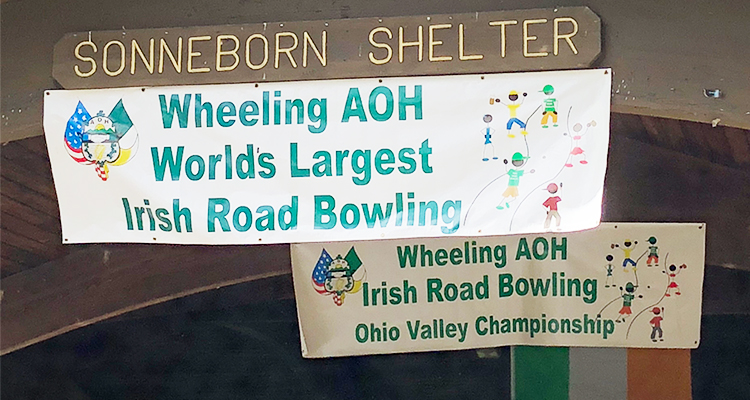An old (American) adage says that everyone is at least a little bit Irish on St. Patrick’s Day. According to our fellow Irish Road Bowlers, the same can be said for the hundreds of people throwing steel balls along Boggs Hill Road in Wheeling as well.
Both of us having the requisite little bit of Irish in us, my wife McKenna and I spent a warm and sunny Saturday afternoon taking part in the traditional Gaelic sport of Irish Road Bowling. Donned in green, we were well dressed for the occasion, but perhaps a wee bit less prepared than our fellow competitors. Veterans of the game arrived with full teams and coolers full of, let’s call them “refreshments” in tow, while we — being rookies — brought only our team of two and a water bottle. But no amount of liquid or quantity of players actually affects performance in the game, and we like to think that we held our own along the course.
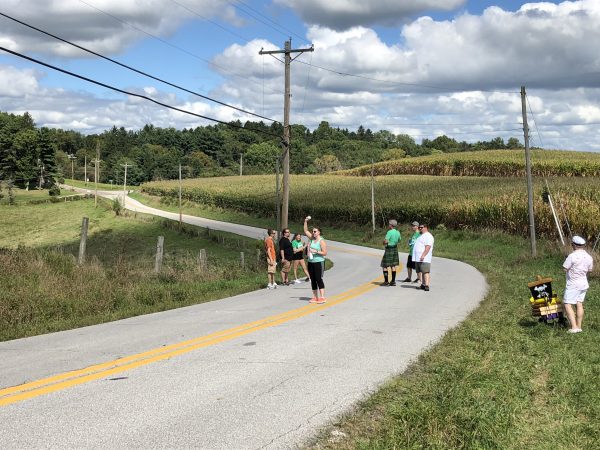
The game of Irish Road Bowling originated in Ireland in the 17th century and is both traditionally played and most contemporarily common in the counties of Armagh in the north and Cork in the southwest of the island. In the United States, there are only three organized Irish Road Bowling leagues: Boston, New York State and our very own West Virginia.
The rules of play are simple: each team takes turns amongst each player throwing a steel ball down a country road from a defined start line to a finish line, with the goal of traveling between the two in the fewest number of tosses. The ball (or bullet) must be thrown underhand, though a player may have a running start, as long as they release the ball before or at the spot it last landed.
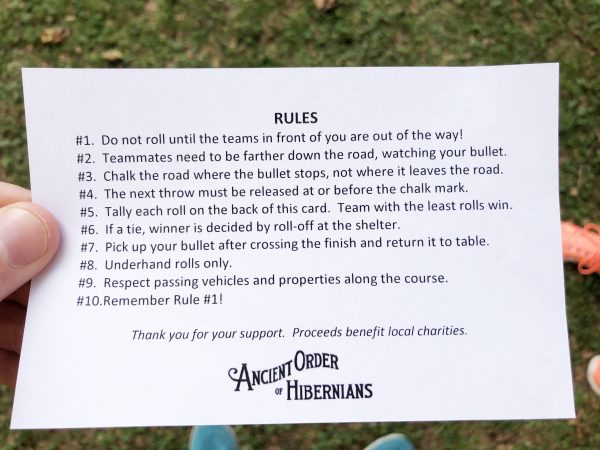
The 2018 Irish Road Bowling McSweeney Cup in Wheeling began with the firing of an American Civil War-type cannon. Though to a casual observer such a start to an Irish game may seem odd, it is a fitting way to launch an Irish Road Bowling event in West Virginia. According to the West Virginia Irish Road Bowling Association, the sport first became popular in the Mountain State during the conflict, with Irish-born soldiers serving the Union’s 23rd Illinois Regiment of Mulligan’s Irish Brigade and the Confederacy’s Company E of the 33rd Virginia — referred to as the Emerald Guard — playing the game to pass the time while in camp. The fact that the 23rd Illinois was primarily stationed along the old Northwestern Turnpike (today’s U.S. Highway 50) while the 33rd Virginia served in the Eastern Panhandle likely led to the popularity of the sport across many corners of the state.
Playing in West Virginia — much like playing in the hills of Cork or amongst the thorny hedges of Armagh — provides added challenge, as each player must calculate the twists, turns and hills along the course. For our team, as well as those around us, nearly as much time was spent searching in the weeds for our ball as was spent throwing and measuring distance.
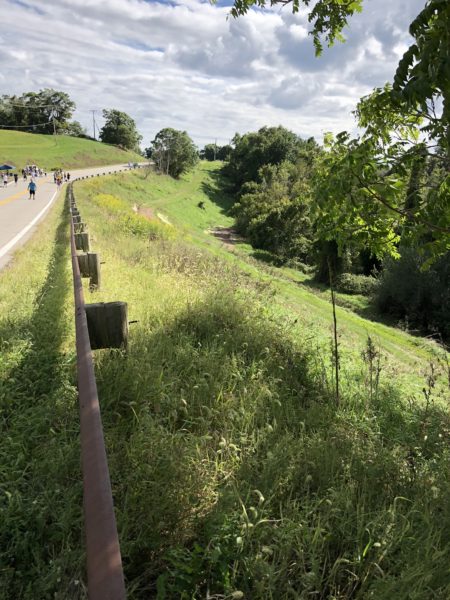
The game uses an honor system for scoring, with each team tallying their throws on a scorecard, much like golf. Our team, named Team McKenna in honor of my wife’s Irish-sounding name, as well as the simple fact that she registered us, was nowhere near the top of the finishers. At the end of the roughly 1.4-mile course, we had thrown our ball 32 times, which is approximately 77 yards per throw. According to event officials, the winning team, Team Sláinte (an Irish Gaelic word that roughly translates to “good health,” a common Irish drinking toast) traveled the course in only 18 throws.
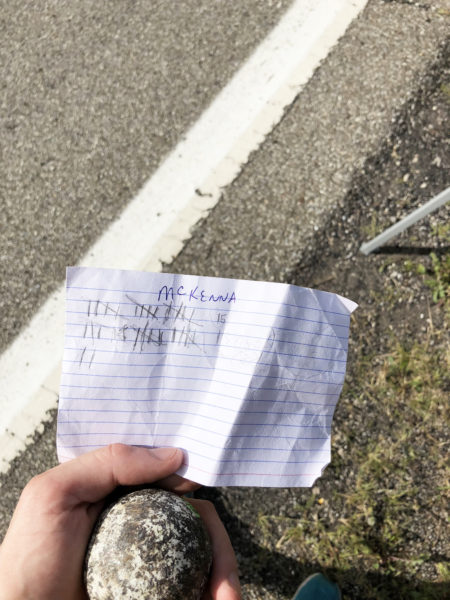
Though Team McKenna returned to the Sonneborn Shelter atop Wheeling Park with little more than sweat and sunburn to show for our efforts, our ear-to-ear grins revealed how much fun we had along the course. The afternoon ended in a way fitting of a traditional Irish game: with good food, new friends and plenty of chances to loudly exclaim, “Sláinte!”
• Nick Musgrave is a self-described history geek living in Wheeling, W.Va. He is a graduate of Hastings College in Hastings, Neb., where he earned his bachelor’s degrees in history and political science. When not writing for Weelunk or uncovering cool stories about the past, he can often be found reading in his hammock or trying to brew the perfect cup of coffee.


